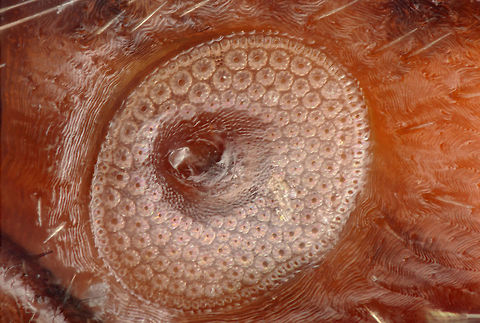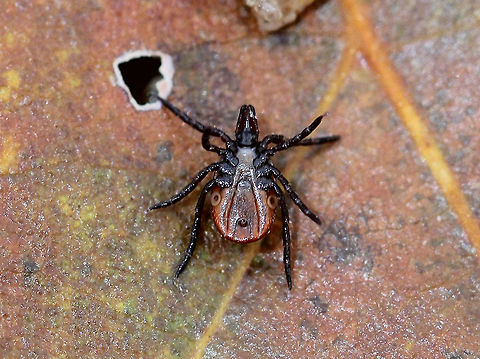
Behavior
"I. scapularis" has a two-year life cycle, during which time it passes through three stages: larva, nymph, and adult. The tick must take a blood meal at each stage before maturing to the next. Deer tick females latch onto a host and drink its blood for four to five days. Deer are the preferred host of the deer tick, but it is also known to feed on small rodents. After she is engorged, the tick drops off and overwinters in the leaf litter of the forest floor. The following spring, the female lays several hundred to a few thousand eggs in clusters. Transtadial passage of "Borrelia burgdorferi" is common. Vertical passage of "Borrelia" is uncommon.Ticks are very hardy creatures and "I. scapularis" is no exception. Expect them to be active even after a moderate to severe frost, as daytime temperatures can warm them enough to keep them actively searching for a host. In the spring, they can be one of the first invertebrates to become active. Deer ticks can be quite numerous and seemingly gregarious in areas where they are found.

Predators
Guineafowl, chickens, and fire ants are known predators of ticks. None has been proven to be effective in populations on a large scale, but anecdotal evidence supports localized control of tick populations.References:
Some text fragments are auto parsed from Wikipedia.